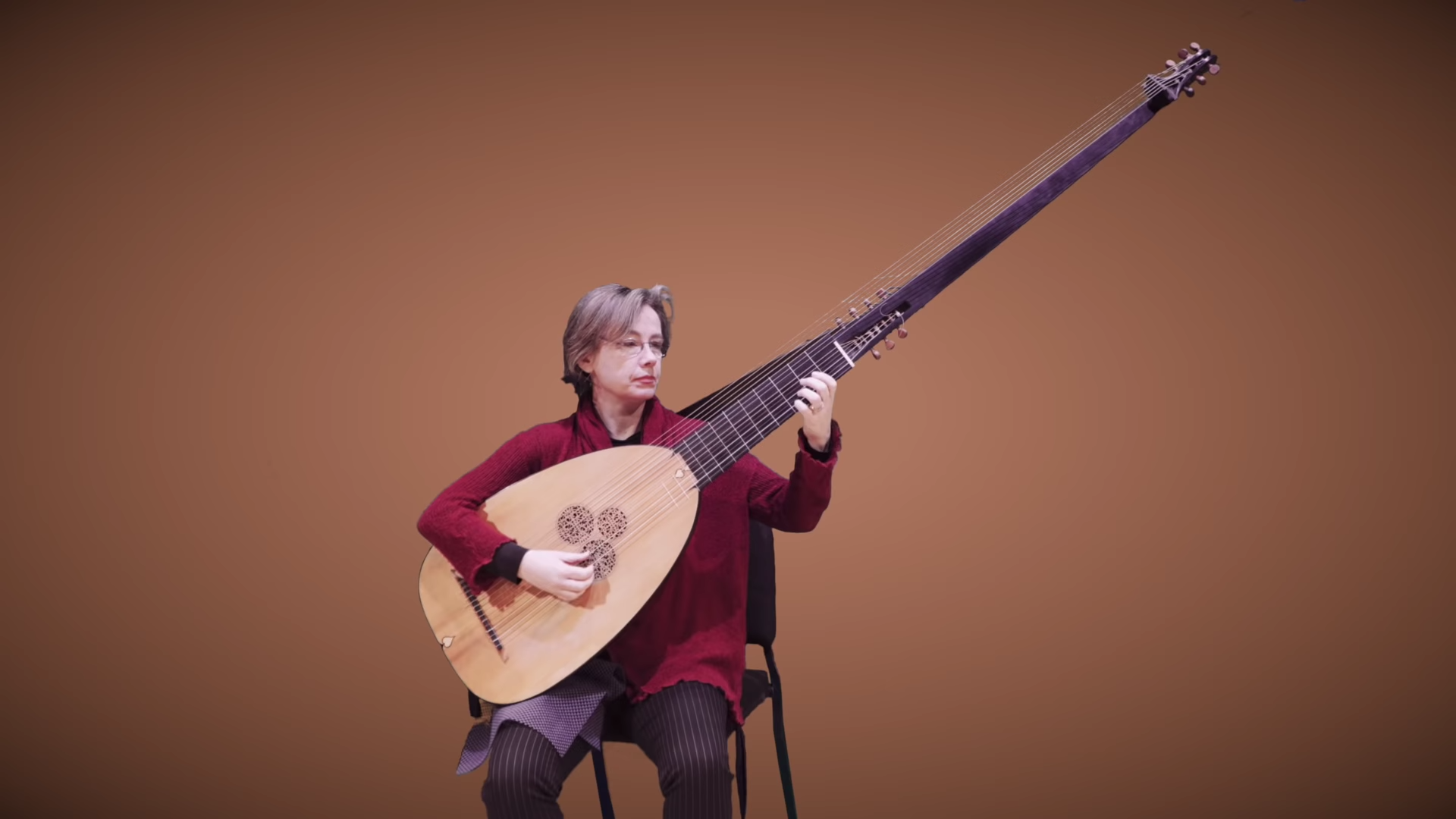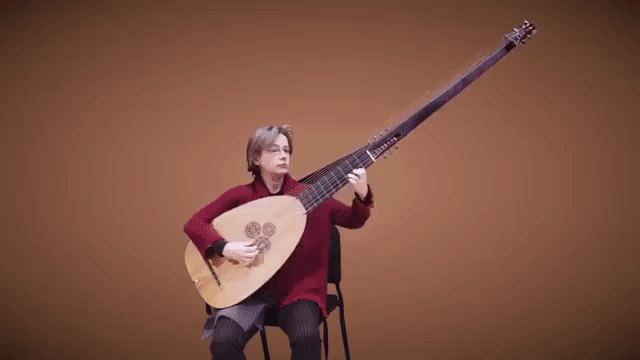A Short History of the Long Necked Theorbo Lute

Musician Elizabeth Kenny of the Orchestra of the Age of Enlightenment played a beautiful Baroque era song on a theorbo, which she explained is a long double necked lute that was first invented by Alessandro Piccinini in the 17th century in order to address the growing need at the time for a fuller instrument sound. The length of the double neck creates considerable bass range and fills out the sound in a lovely manner. Kenny jokes about the instrument being of two personalities, part serious, part "daft", particularly when she's taking the tube in London.
Essentially I'm playing a lute with an extra neck. Puccini called his invention the arch lute and other makers at the same time were working on a different kind of prototype called a chitarroni. This was meant to evoke the music of the spheres. The ancient Greek guitarra and was very intellectual enterprise however because it looks a bit daft it acquired a second name a theorbo. "what I love about the instrument is that these two identities the serious one and the daft one existed and still co-exists. When I catch the Tube in London, the capona or the blockhead identity comes out. People complain a lot about the space that I take up.
Here's Kenny playing the theorbo alongside a vocal performance given by soprano Mary Bevan of "Lagrime Mie" by Barbara Strozzi.
Related Laughing Squid Posts- Talented Musician Performs 'Prelude in C Minor' by J.S. Bach on a Beautiful Renaissance Archlute
- An Animated Multi-Necked Stringed Instrument With Spidery Fingers Plays Itself an Acoustic Tune
- The Medusa, A Truly Unique Instrument With Multiple Necks and an Incredible 52-Strings
The post A Short History of the Long Necked Theorbo Lute appeared first on Laughing Squid.
